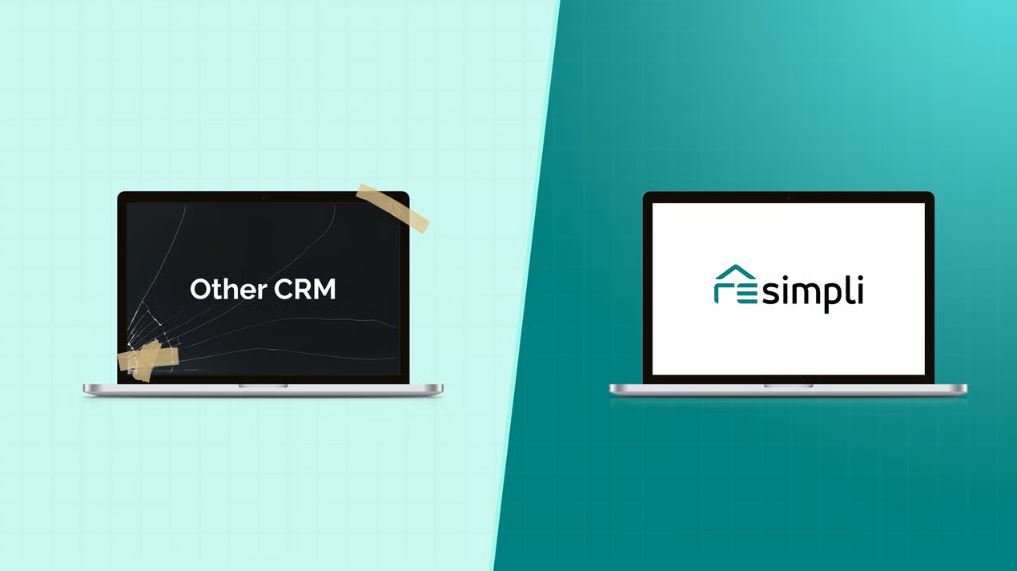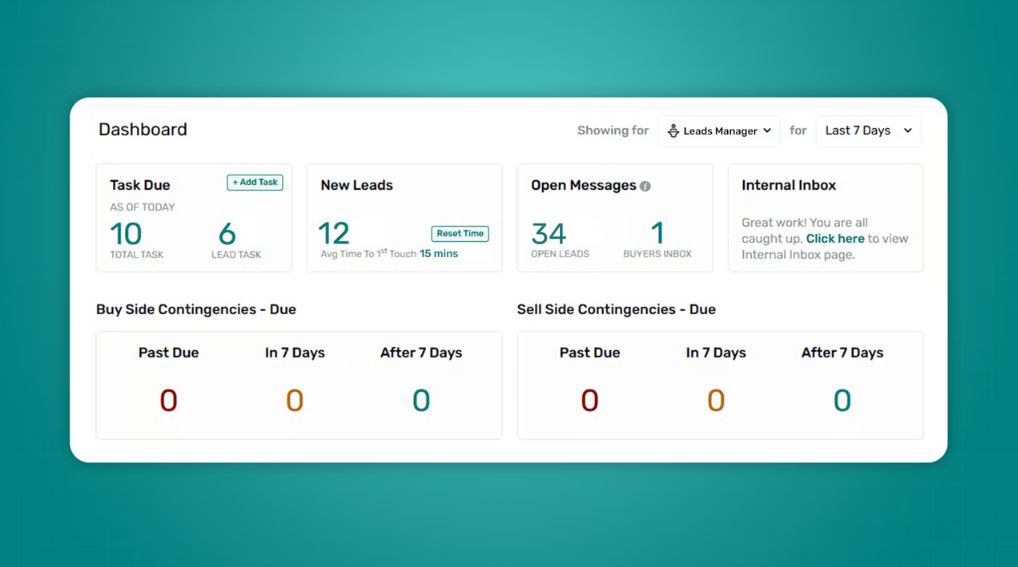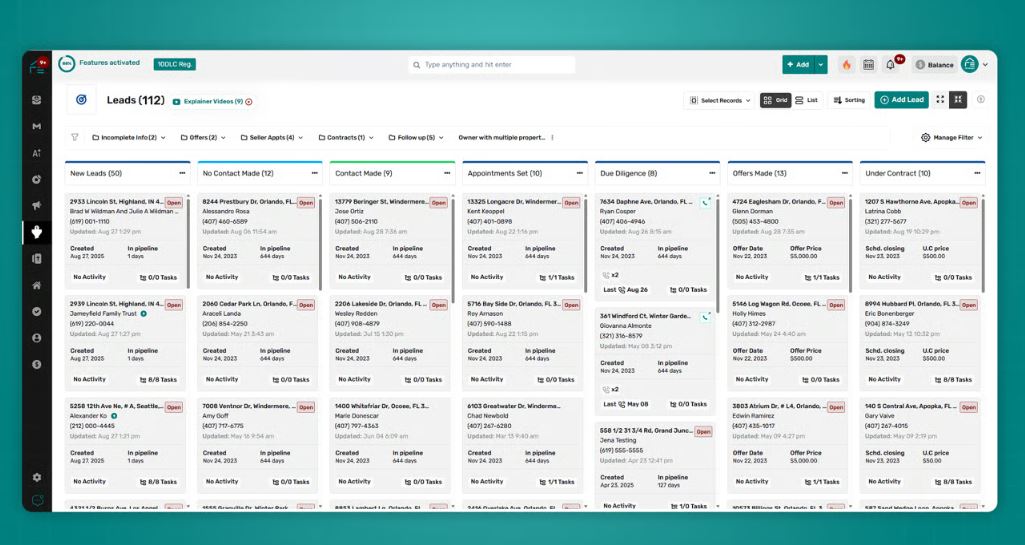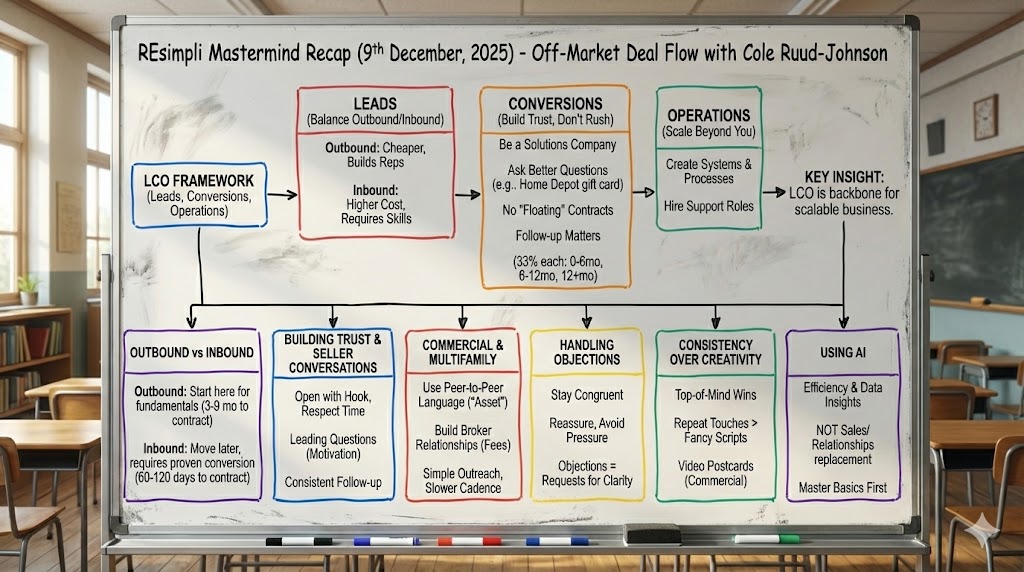Want to close more deals? Up your lead qualifying game.
Leads are the lifeblood of your real estate business. If you don’t qualify them quickly and effectively, they form clots and block up your deal flow.
You waste time on bad leads while letting good leads languish.
In short, you earn less money.
You have limited time and resources, so sifting out the good leads helps you position your offers to succeed before you ever bring up numbers or negotiation.
Follow these rules for success to not just qualify your leads better, but to pre-negotiate and close more deals.
Contact Inbound Leads Immediately

Inbound leads tend to be more motivated, better quality leads than outbound leads.
Answer as many of these calls live as you can. Use REsimpli’s Speed to Lead feature to ring you and any other members of your acquisition team simultaneously.
If you miss the call, aim to call back within two to five minutes. But to buy you a little more time, REsimpli can automatically text the caller back on your behalf, asking for a few basic pieces of information.
You can also pay a call center like Call Porter to either answer calls for you or call back leads within two minutes. Call Porter specializes in working with real estate leads, and can follow your specific scripts.
In fact, REsimpli has partnered with Call Porter, to integrate them with Speed to Lead. Our CRM can ring your and your team’s phones simultaneously, and if you don’t pick up, it can then transfer the call to Call Porter automatically so that a live human always answers.
Plan for a Two-Step Sales Process

Your sales system should feature at least two conversations: a qualifying call and an offer conversation.
In the qualifying call, you ask questions and establish trust and rapport with the seller. That lets you not just conduct due diligence on the deal, but also glean all the information you need to make a persuasive offer and negotiate.
After you’ve wrapped up your due diligence, you can have another conversation with the seller to make your offer. That could be a phone call, or better yet an in-person chat.
Uncover the Seller’s Motivation

Not every property owner has a strong motivation to sell. Some are just curious about what they could get for their home.
Others feel a burning need to sell. These often include owners going through foreclosure, tax sale, probate, divorce, tenant problems, or an urgent relocation out of town.
These motivated sellers will work with you on price and close quickly. Once you get to the root of their motivation, you don’t have to do any hard selling — you just speak to solving that problem for them.
Other less motivated owners can go on a long-term drip campaign, allowing you to follow up with them periodically. Often they call you back months or even years later, and you can still close a deal with them.
(And yes, REsimpli not only automates your drip campaigns for you, but has templates you can set up in a few clicks!)
Qualifying Leads
Now that you’ve separated out the truly motivated from the tire kickers, you can start drilling down to the property and financials. Start by asking about these big-picture questions:

- Time Frame: Is the owner ready to sell now? Or does their timing hinge on another factor like a divorce or relocation?
- Property Condition: What repairs does the property need? Specifically, what cosmetic updates, what mechanical repairs, and what structural repairs does the property need?
- Decision-Maker Authority: Is the person you’re speaking with actually authorized to sell the property?
- Lien Balances: What do they owe on the primary mortgage? Do they have a second mortgage? What about mechanic’s liens or tax liens? Are the combined balances too high for a profitable deal?
- Price Expectations: As a ballpark figure, what does the seller expect as a “fair price”? How far off are their expectations compared to what you could make pencil?
These broad questions serve as a starting point, but we have a more detailed qualifying strategy called the “SPIN technique” that we teach. These not only help you qualify the lead, but they lay the groundwork for your negotiation on price later on. Read up on exactly how the SPIN technique works to supercharge your sales conversion rate.
Professionalize Your Real Estate Business
Professional athletes don’t duct tape together their shoes. So why are you trying to duct tape together your real estate business?

If you want to earn profits like a professional real estate investor, use the tools your pro competitors are using. That starts with marketing and accounting tools like REsimpli.
Don’t take our word for it. Try it out for yourself with a 30-day free trial.
We look forward to hearing your feedback and successes after your first month running with the big dogs.
Leverage a Structured Sales Script
Word to the wise: don’t wing your sales conversations. Create a structured sales script, and then continually refine it over time until it wins over even the most skeptical owners.
Of course, good sales scripts don’t sound like scripts at all. They should sound natural, not robotic. Personalize your scripts for each seller.
In fact, you want to mirror the seller’s personality so they’ll feel a deeper connection with you. Sellers typically fall into one of four archetypes: analytical, a driver, social, or social-conscious. Analytical sellers want data, drivers want direct answers, social sellers like storytelling, and social-conscious sellers care about who will buy the home.

Use variations of your sales script for each of these seller types. But even more important than your words are your tone and communication style: meet the seller where they are and mirror what they want.
Scripts should cover all those SPIN questions touched on above, in a personable, professional, and friendly way.
Again, your goal isn’t just to gather information. Your other goal in the qualifying call is establishing a bond with the seller. We see a strong correlation between the length of the qualifying call and closing rates. The longer you chat with the seller, the better the odds they’ll end up selling to you.
We’ve found that qualifying calls that last 30 minutes or longer lead to excellent odds of closing.
Maneuvering Objections Up Front

Don’t wait for the seller to start ruminating on all the reasons they shouldn’t sell to you. Preemptively quash them.
Inexperienced investors fumble by trying to do this through persuasion. Instead, use more subtlety by asking clever questions.
For example, ask them “What is preventing you from listing with a real estate agent?” This opens the door to a candid conversation that they can of course sell for the best price through a Realtor, but it might take them months to do so, and it might require tens of thousands in repairs and upgrades.
The SPIN technique involves out-maneuvering objections before they ever have a chance to form. Ask questions that lead the owner to their own conclusion that it makes more sense to sell to you, rather than trying to convince them through blunt force.
Example questions include:
- What would happen if you couldn’t sell your property in the near future?
- What other expenses would you have to take on if you couldn’t sell your property quickly and in its current condition?
- How has your property’s condition affected your ability to sell it?
- How would it affect your bottom line if you had to pay closing costs and real estate agent commissions in order to sell your property?
- What impact would it have on your life as a whole, if you could sell quickly and move on to the next venture?
- How do you feel about holding open houses and keeping the house in pristine condition for buyers and their agents walking through the property over the next few months?
As a final thought, part of preempting these objections is being honest and forthcoming. If you plan to wholesale the property, tell the owner up front that may assign the contract to your partner if they’re a better fit for buying and renovating it.
Negotiation Tactics
The SPIN technique questions lay the groundwork for an easy negotiation.
Pre-frame the price by asking about the owner’s idea of a fair price. If they quote a price too high for you, you can reply with something like “That may not be realistic for a cash buyer like me, who buys as-is without any seller repairs or inspections. You might get that from a homebuyer, if you’re willing to put some money into repairs and list the property with a Realtor. Just be aware that it could take months and many open houses to get there.”
Don’t make an offer right away. Once you’ve completed your due diligence, do any last pre-framing that you need to get the seller in a receptive headspace.
Remember to always speak to the seller’s motivation. If they’re in foreclosure, speak to closing and getting them as much money as possible before the auction date. Instill as much urgency as possible, even if you have to manufacture it by saying “I have a limited budget for buying houses, and I’m looking at a half dozen others right now. I can close by next Friday, but only if we go under contract within the next 24 hours.”
Once you make an offer, you surrender all the initiative and leverage to the seller.
To reclaim some of that leverage, you must always be ready to walk away if the seller counters with a price that doesn’t pencil. You must know your maximum allowable offer before entering the offer conversation.
If the deal doesn’t work out right now, just put the lead on a long-term drip campaign. You never know when they’ll call you back out of the blue.
Finally, if the seller appears to be collecting multiple offers, ask for the last look. Ask them to call you and give you a chance to match or beat their best offer before they make a final decision. Often you can salvage these deals by getting in the final word.
Track Offers Closely
Offers should not sit in “Offer Made” status for more than a week without action.
Set a strict timeline. If you don’t get a response within seven days of making an offer, move the lead to a warm lead or dead lead status.
Even so, don’t just call prospects “to check in.” It sounds desperate and you lose negotiating power.
Instead, call them and reference a specific milestone. “Hi Bob, I saw on my calendar that your foreclosure auction is two weeks away. If we’re going to be able to close before then, we’ll need to order the title work now. Do you want to move forward and stop the foreclosure?”
If the seller rejects your offer, put the lead into an automated drip campaign for re-engagement. Many sellers take months or even years to make a decision. Consistent follow-up keeps investors top-of-mind.
Assign or Hire a Leads Manager

Don’t have time to track all your offers and leads yourself?
Assign a member of your team to do it. Have them listen to a sample of lead call recordings every day, and score your team members on their performance. Ask them to check up on outstanding tasks at the end of each day.
Did any lead calls go unanswered? Did any leads not make it on a drip campaign? Do any offers need follow-up calls but didn’t receive them?
This creates accountability in your business — even if you’re the one who needs to be held more accountable.
Reverse Wholesaling in a Buyer’s Market
Housing inventory for sale has risen 20.9% over the last year, according to Realtor.com. And that inventory continues to grow, transitioning most US cities to a buyer’s market.
That makes it easier to find property deals but harder to sell them.

So, start with the buyer in mind. If you’re a wholesaler, ask a handful of your best buyers what they’re looking for in property purchases. Do they want three-bedroom two-bathroom colonials? Small multifamily properties? Start targeting leads that match their buying criteria.
Likewise, if you flip houses yourself, survey a few local real estate agents about what types of properties are seeing the most demand right now. Again, target those types of leads.
In other words, get ahead of the buyer’s market curve.
Automate Your Lead Flow

The right CRM helps you close more deals, by preventing leads from falling through cracks and making sure every lead gets the follow-up they need to close.
REsimpli tracks and categorizes your leads as qualified or non-qualified, and tracks their KPIs.
Our list stacking feature helps you remove duplicate mailing addresses when you market to owners with multiple properties, to prevent wasted marketing spend. The lead database automatically matches phone numbers, so you can contact leads.
You can answer calls directly in our app (web or mobile) if you like.
On the bookkeeping side, you can connect your bank account to REsimpli to automatically import all income and expenses. We’ll label them for you, and you can edit those labels manually to refine or correct them.
And as your team grows, you keep granular control over exactly which team members have access to which tools.
Ready to make the jump to light speed in your real estate business? Take REsimpli for a free 30-day test drive to see exactly how we’ll not only save you money, but help you earn a lot more of it.


![Investing with other people’s money [Part 2]](https://resimpli.com/wp-content/themes/REsimpli/images/how-it-work.jpg)